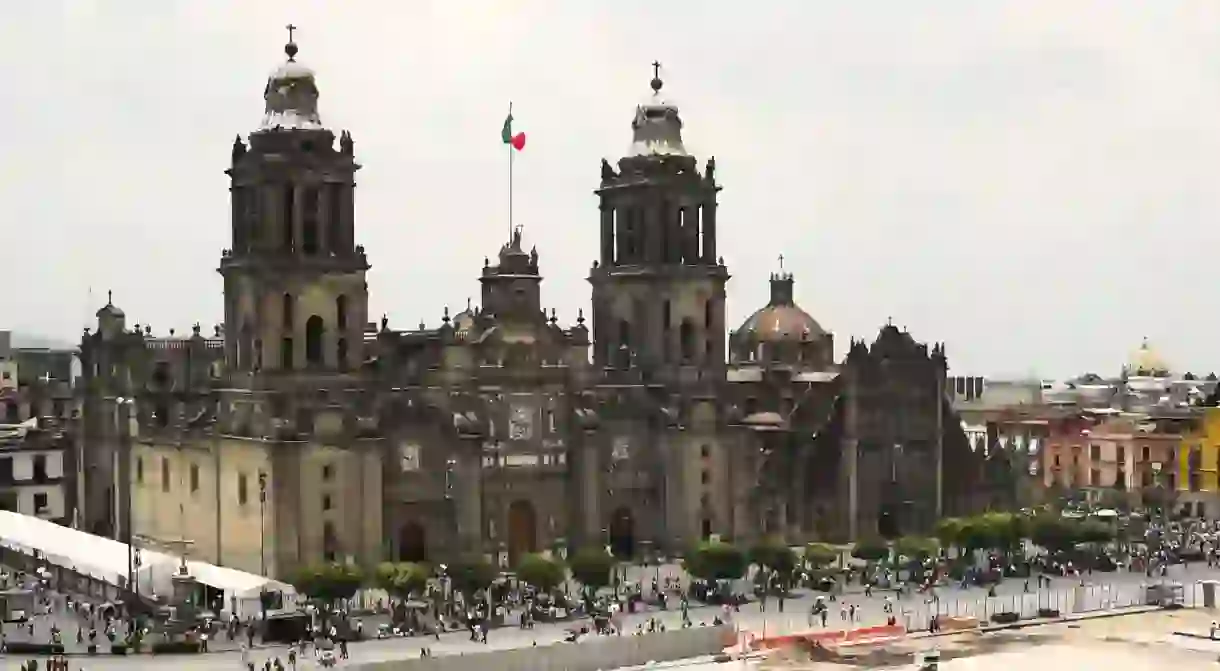A History of Mexico City’s Metropolitan Cathedral in 60 Seconds

If you’ve visited Mexico City, you’ll be familiar with the imposing cathedral that dominates the vast central square known as the Zócalo. But where did it come from? And is it really sinking? Here’s a rapid history of the Catedral Metropolitana.
Want to see the very best of Mexico City? Join Culture Trip’s immersive five-day adventure around the capital. Led by a Local Insider, you’ll visit hidden corners of the city with a small group of like-minded travelers.
The Metropolitan Cathedral (or to give it its full title, the Metropolitan Cathedral of the Assumption of the Most Blessed Virgin Mary into Heaven) is not only one of the most treasured architectural masterpieces in Mexico, but also one of the largest and oldest cathedrals in Latin America.
Work began shortly after the Spanish conquered the city of Tenochtitlan – which stood on the same land as modern-day Mexico City – replacing an Aztec temple.
It took three centuries to build, from 1573 to 1813, so it makes sense that the architecture is an amalgamation of the three distinct styles that dominated during its construction: baroque, neo-classical and neo-renaissance. But not even three centuries of development could ensure the foundations were sufficiently resilient. The cathedral – much like the rest of Mexico City – gradually sinks into the shifting lake upon which it was built.
Urban legend even asserts that an underground pathway connects the neighboring Templo Mayor with the cathedral. Hearsay at its finest. The link between the two structures is irrefutable though; almost all of the stone from the Templo Mayor is built into the cathedral. It’s even claimed that Spanish Conquistador Hernán Cortes was responsible for laying the first one.
Despite being a great source of Mexican pride, the cathedral, which now houses the seat of the Roman Catholic archdiocese of Mexico, was actually designed by Spaniard Claudio de Arciniega and inspired by the gothic architecture in the Spanish city of Valladolid. All the high reliefs on the portals are equally foreign in inspiration, influenced by Flemish artist Peter Paul Rubens.
However, the impressive bell towers are of Xalapan design and house 25 bells. The largest of these, Santa Maria de Guadalupe, weighs 13,000kg (28,600lb). But it’s not the only bell with a name. Another is known as Doña Maria; yes, like the mole paste brand.
Yet the external architecture is by no means the biggest draw of this popular cathedral, as the internal offerings are just as magnificent. Numerous works of art, religious relics and crypts adorn every orifice, including in the 16 chapels.
Gold coats every surface and towering ceilings add to the grandeur of the Altars of Forgiveness and of the Kings. The Altar of Forgiveness was damaged in a 1967 fire along with the biggest 18th-century organ in the Americas. This fire led to the discovery of previously hidden treasures, including more than 50 paintings, historical documents concerning Hernán Cortes and the burial place of the first governor of Veracruz, Miguel Barrigan.













